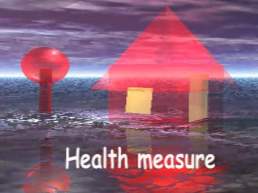
 |
The main objective of medicine is to treat diseases. It's conceptual framework, or theory, provides rational guidelines how to treat. An individual exists in two states, health and disease, and treatment ought to restore health. Health restoration is regarded as cure. This simple scheme fails in chronic diseases, and particularly in cancer. Take for instance breast cancer which is diagnosed when tumor is detected. Could one regard breast ablation, which leaves the woman disfigured, as health restoration? Actually mastectomy initiates a new kind of health. This example illustrates that:
-- In cancer and other chronic diseases, treatment does
not restore health. It induces a new kind of health.
-- Health is relative. It may be better or worse.
-- Treatment objective is not to restore health, but to establish
the best health in circumstances.
-- In order to establish the best health, medicine needs a health measure.
How does cure fit into this scheme? It does not restore health, and in chronic diseases it does not eliminate disease. Nevertheless the oncologist regards mastectomy as cure. He will adhere to his view even after new cancer manifestations have appeared. Now he distinguishes between local cure, which failed and systemic cure, that has to be achieved.
The "cure" concept has a serious disadvantage. Its definition
depends on the ultimate fate of the patient. If dying from cancer, she was not
cured. On the other hand suppose that a patient has undetected micro-metastases
and dies from an heart attack, she is regarded as cured from cancer. This faulty
concept distorts oncology reasoning, introduces bias to cancer epidemiology,
and breads unreliable statements which cause epidemiology
to spread disinformation. Cure ought to be replaced by remission.
Remission depends on observation. If you see it, it relapsed, and if not, it's
in remission. Remission-relapse was first introduced in leukemia, an incurable
disease where treatment objective was to restore remission and maintain it.
These concepts ought to be applied to all chronic diseases. Relapse means recurrence
of the disease, and since this concept is established in medicine it will be
redefined slightly. A diseases is either hidden (pre-clinical) or overt (clinical).
When hidden it is in remission, and when detected, in relapse. Before cancer
is detected, it is in remission. When diagnosed, it relapses, and mastectomy
induces remission.
Treatment objectives may now defined as follows:
-- In cancer and other chronic diseases, treatment is directed to induce
remission and establish the best health quality in circumstances.
-- Each remission has a different health quality.
-- In order to establish the best health quality, medicine needs a health
measure.
Let's return to Canguilhem's analysis of health. "Health is a margin of tolerance for the inconsistencies of the environment". "To be in a good health means being able to fall sick and recover, it is a biological luxury". "Inversely, disease is characterized by the fact that it is a reduction in the margin of tolerance for the environment's inconsistencies."
The more threats your body can handle the healthier it is. The greater your tolerance to environmental threat the healthier you are. This important definition will be illustrated by few examples. Each example will compare the functioning of two individuals.
-- A weight lifter is healthier than a sedentary. Provided
that all other functions in both individuals are the same. His tolerance
to weights is better than that of a sedentary.
-- An athlete has better tolerance to myocardial infarction, than a sedentary
.
-- A jogger has better tolerance to bone fractures than a sedentary.
-- A vaccinated person has a better tolerance to smallpox than a non
vaccinated.
-- Since an elderly does not get childhood diseases, his tolerance to childhood
disease is better than that of a child.
When a plague kills 20% of the population, one may conclude that prior to the plague, 80% had a better tolerance to it, than the unfortunate 20%. The toxic dose which kills 50% of animals, known as LD-50, indicates also that the other 50% had a better tolerance to this particular poison.
The set of all processes in the body is called here Wisdom
of the Body (WOB). Since WOB is optimal, any WOB solution maximizes tolerance
in circumstances. Our treatment objectives ought to be:
-- In cancer and other chronic diseases, treatment is directed to induce or
maintain remission with the best tolerance.
-- Since only WOB knows how to maximize tolerance. Treatment ought to support
WOB..
If WOB is so smart why does it need assistance? WOB is there
to optimally maintain life with the available resources. WOB cannot accumulate
resources. All it knows and cares about is how to best utilize available
resources. Suppose that a sedentary person decides to become an athlete,
it means accumulating resources (muscle) and raising his tolerance to osteoporosis.
This decision is initiated by the mind, which then asks WOB to support
its will.
This is the virtue of the Cancer-Yogi whose WOB
knows how to sustain remission. Its is also the secret of the Smoker-Yogi
who increased his tolerance to cigarettes.
Vitamin deficiency
When an essential substance, like vitamin C is missing, WOB cannot get it. As
deficiency deepens, WOB will reshuffle processes to sustain life. Initially
deficiency, will be compensated and patient healthy. When WOB fails to
control vitamin C dependent processes, it makes the patient feel miserable,
which is a message to the mind to get help. The physician diagnoses
Scorbut and treats it with vitamin C. Without his help WOB would continue
sustaining life until the patient dies. This is where medicine comes in. Its
task is to provide resources which WOB and mind cannot get.